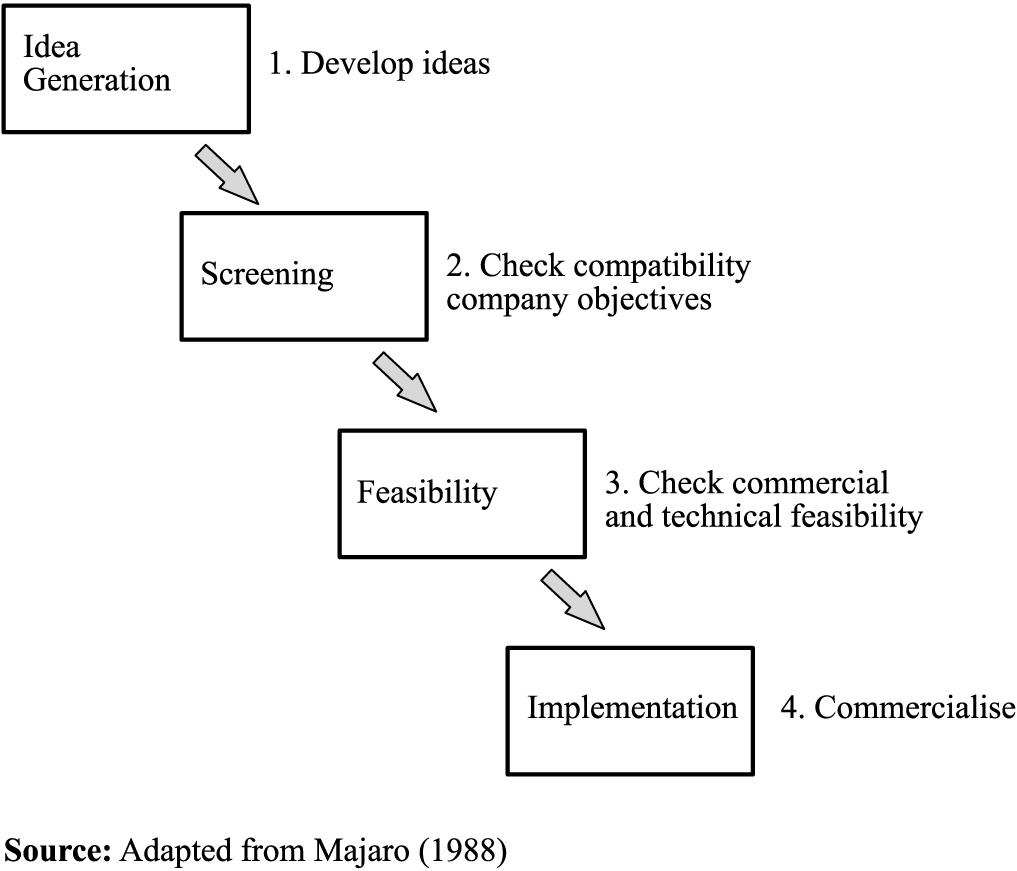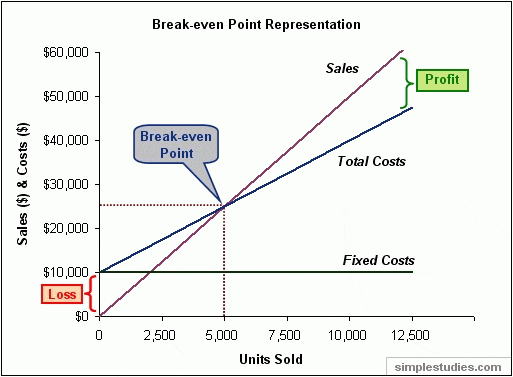Introduction
Before starting any business, it is paramount for entrepreneurs to formulate a business plan. A business plan entails a detailed account that outlines how a certain business idea will be implemented within a particular time frame. According to Abrams, and Kleiner(2003, p.33), a business plan acts as a guide on the various activities that a firm has to undertake. This arises from the fact that it outlines the various steps which have to be taken into account to ensure successful implementation of the business idea identified.
Some of the elements which are taken into consideration in the business planning process include analyzing the feasibility of the business idea, determining the required resources, and the control procedures which will be used to ensure successful implementation of the business plan (Abrams & Kleiner, 2003, p.34).
In addition to acting as a roadmap, a business plan can also be used to source funds externally (Abrams & Kleiner, 2003, p.34). This arises from the fact that external financiers evaluate business plans to determine their viability. As a result, they can avert losses that might arise from extending credit to projects which are not viable. Business plans should focus on the long term rather than the short term. Through the formulation and implementation of an effective business plan, the probability of a particular business venture succeeding is enhanced. Additionally, business plans contribute towards the improvement of firms’ competitive advantage.
Idea generation
Every business starts with a certain idea. There are various sources of ideas that entrepreneurs can utilize. One of these sources relates to the skills, talents, and experience possessed by the entrepreneurs. The entrepreneurs can use their skills, talents, and experience as a source of a business idea. Alternatively, an entrepreneur can also source a business idea by analyzing the existing market needs or gaps (Longenecker, Moore, Palich & Petty, 2005, p.52). For example, an entrepreneur may identify a product within the market that needs to be improved. The improvement may entail making the product to be more effective or cheaper. An entrepreneur may generate an idea by identifying a new market segment that has not been exploited (Baumgartner, n.d, para. 3). A business idea can also be generated through a brainstorming session or from consulting business experts. Additionally, business ideas can also be generated through networking with different business parties. Networking can give an entrepreneur an idea regarding a particular business venture.
To be successful in generating business ideas, entrepreneurs should scan the environment to identify feasible business ideas. Some of the elements which they should take into consideration when scanning the environment relate to the prevailing trends (Kuratko, 2008, p.128). Some of the trends which the entrepreneurs should take into consideration related to those prevailing within the macro-environment.
Upon generating business ideas, entrepreneurs should screen or evaluate whether they will add any value. The screening process should consider the value-added to the customer, whether the idea solves any problem or meets a significant need or want. Taking into consideration these elements will aid in determining whether the idea is robust (Baumgartner,n.d, para. 4).
Additionally, the entrepreneur needs to evaluate whether he or she possesses the necessary skills to ensure the successful implementation of the idea. If the idea identified is valuable, the entrepreneur should develop it to have a clear understanding of how it will be implemented. The chart below illustrates the idea generation process that entrepreneurs can adopt.

Strategic objectives
A business plan should contain well-formulated strategic objectives. The strategic objectives outline the milestones or targets that the business intends to achieve in the course of its operation. By evaluating the formulated strategic objectives, a particular business can be able to determine whether its operations are successful or not. During the process of formulating strategic objectives, entrepreneurs should take into consideration both long term and short term objectives (Planware, 2011, para. 8).
Before the formulation of the strategic objectives, entrepreneurs should clearly define their firms’ mission, vision, and value statements (Planware, 2011, para. 8). These statements should clearly outline the reasons for the firm’s existence. The vision and mission statements form the basis in the process of formulating medium and short-term goals.
Strategic objectives are an important element in a firm’s strategic management processes. This arises from the fact that all the businesses’ policies and strategies have to be in line with the strategic objectives. To ensure the effective formulation of strategic objectives, entrepreneurs should take into consideration the trends within the macro environment. This can only be attained by conducting comprehensive market research and analysis (Beam, 2008, p. 65). As a result, the entrepreneur can determine the strategic objectives to incorporate in its operation. The resultant effect is that a firm can attain the desired competitive advantage.
It is also important for entrepreneurs to ensure that the strategic objectives formulated are SMART in nature. This means that the objectives should be ‘specific’, ‘measurable’, ‘achievable’, and ‘realistic’, and ‘time bound’ (Cheverton, 2004, p. 97). Specific means that the objective should stipulate what the business intends to achieve. ‘Measurable’ means that the set targets should be quantifiable for example, in monetary terms. ‘Achievable’ means that the targets set should be attainable while ‘realistic’ means that the entrepreneur should have the necessary resources to achieve the objectives (Beam, 2008, p. 85). On the other hand, ‘time bound’ means that the objectives set should be attained within a specific time frame.
Market Analysis and Research
Zimmerer, Scarborough, and Wilson (2008, p.138) assert that understanding the market is an important element in the operation of firms in different economic sectors. This arises from the fact that it enhances the effectiveness with which entrepreneurs formulate the various operational strategies.
To develop a comprehensive understanding of the market, entrepreneurs should conduct a market audit. One of the ways through which they can achieve this is by conducting a market analysis and research. About market analysis, the entrepreneur should incorporate a situational analysis. To ensure that the situational analysis conducted is effective; entrepreneurs should take into consideration both the macro and microenvironment. Consideration of these environments arises from the fact that business operations are affected by different factors that emanate from the environment within which the firm operates.
There are various models that the entrepreneur can adopt in the process of conducting a situational analysis. Some of these models include the PESTLE analysis and the SWOT analysis (Abrams & Kleiner, 2003, p.45). About evaluating the macro-environment, the entrepreneur can use the PESTLE model. This model aids in evaluating the political, economic, social, technological, and legal environments. These environments are beyond the control of entrepreneurs. On the other hand, entrepreneurs can conduct a resource analysis and a SWOT analysis to understand the micro-environment. Resource analysis aids in the evaluation of the viability of a certain market segment. As a result, the entrepreneur can determine market targeting and positioning strategies to adopt. On the other hand, the SWOT analysis aids in the determination of the strengths, weaknesses, opportunities, and threats within a particular market segment.
Understanding Competition
Entrepreneurs should formulate effective competitive strategies. To achieve this, they should have a comprehensive understanding of the competition prevailing within the market. According to Balanko-Dickson (2006, p. 40), entrepreneurs should be concerned with both direct and indirect competition.
This arises from the fact that competition affects the profitability potential of a business. However, understanding the competition within the business can give entrepreneurs an idea of the competitive strategy to adopt. There are various competitive strategies that entrepreneurs can take into consideration. Some of these strategies include cost leadership, differentiation, or a combination of the two strategies. Additionally, there are different marketing strategies that entrepreneurs can integrate to attain a competitive advantage. An example of such strategies includes the 7Ps which the entrepreneurs can adopt in their marketing processes. The 7 Ps include price, product, place, promotion, people, process, and physical evidence.
Financial Planning
According to Nissenbaum, Raasch, Young, and Ratner (2004, p.401), financial planning refers to the process through which entrepreneurs project the present and future financial requirements of their businesses. One of the core reasons why businesses are formed is to make a profit. However, to attain this, entrepreneurs have to incur a substantial cost. Therefore, budgeting is very important in financial planning. This is because it enables the entrepreneur to understand the costs that the business project will incur. Some of these costs relate to the cost of undertaking market research, and the cost of procuring assets. Budgeting also helps entrepreneurs in the process of sourcing for finance. This arises from the fact that the entrepreneur has a better understanding of the costs required to establish the entity.
To be effective in making financial projections, there are various tools that the entrepreneur can adopt. Some of these tools include cash flow statements, balance sheets, and profit and loss statements. The projections made using these tools should relate to a given period of the business entity. Another concept that entrepreneurs can adopt in the process of conducting financial planning is conducting a breakeven analysis. Break-even analysis enables the entrepreneur to have an understanding regarding the point at which the business will breakeven (Nissenbaum, Raasch, Young & Ratner, 2004, p. 406). The chart below illustrates an example of a break-even analysis that the entrepreneur can adopt.

Reference List
Abrams, R. & Kleiner, E., 2003. The successful business plan: Secrets and strategies. New York: The Planning Shop.
Balanko-Dickson, G., 2006. Tips and traps for writing an effective business plan. New York: McGraw- Hill Profession.
Baumgartner, J., n.d. The creative idea of implementation. Web.
Baumol, W. & Blinder, A.. 2008. Economics: principles and policy. New York: Cengage Learning.
Beam, L., 2008. The creative entrepreneur: A DIY visual guidebook for making business ideas real. Beverly, Mass.: Quarry Books.
Cheverton, P., 2004. Key marketing skills: Strategies, tools, and techniques for marketing success. London: Kogan Page.
Kumar, A., & Haran, H., 2006. Corporate entrepreneurship: Strategic imperative for growth. Hyderabad: ICFAI University Press.
Kuratko, D., 2008. Entrepreneurship: Theory, process and practice. New York: Cengage Learning.
Longenecker, J., Moore, C., Petty, W., & Palich, L., 2005. Small business management: An entrepreneurial emphasis. New York: Cengage.
Nissenbaum, M., Raasch, B., Ratner, C., & Young, E., 2004. Earnest and Young’s personal financial planning guide. Hoboken, N.J.: Wiley.
Planware. 2011. Business planning papers: Developing a strategic plan. Web.
Tassiopoulos, D., 2008. New tourism ventures: An entrepreneurial and managerial approach. Capetown: Juta.
Zimmerer, T., Scarborough, N., & Wilson, D., 2008. Essentials of entrepreneurship and small business management. New York: Pearson.
